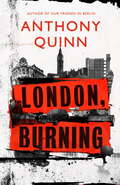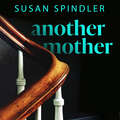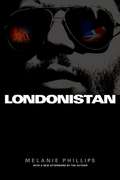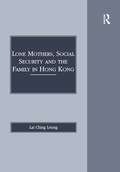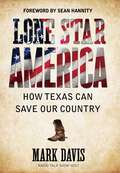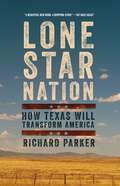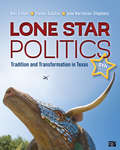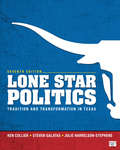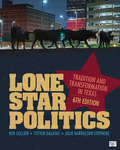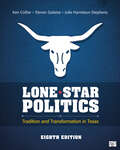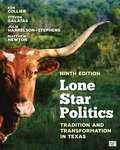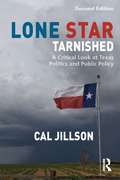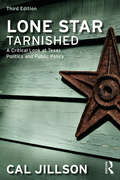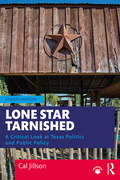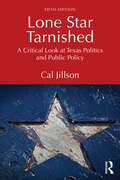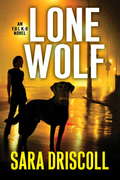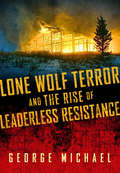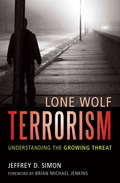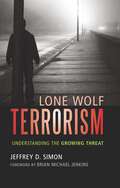- Table View
- List View
London, Burning: 'Richly pleasurable' Observer
by Anthony QuinnLondon, Burning is a novel about the end of the 1970s, and the end of an era. It concerns a nation divided against itself, a government trembling on the verge of collapse, a city fearful of what is to come, and a people bitterly suspicious of one another. In other words, it is also a novel about now. Vicky Tress is a young policewoman on the rise who becomes involved in a corruption imbroglio with CID. Hannah Strode is an ambitious young reporter with a speciality for skewering the rich and powerful. Callum Conlan is a struggling Irish academic and writer who falls in with the wrong people. While Freddie Selves is a hugely successful theatre impresario stuck deep in a personal and political mire of his own making. These four characters, strangers at the start, happen to meet and affect the course of each other's lives profoundly.The story plots an unpredictable path through a city choked by strikes and cowed by bomb warnings. It reverberates to the sound of alarm and protest, of police sirens, punk rock, street demos, of breaking glass and breaking hearts in dusty pubs. As the clock ticks down towards a general election old alliances totter and the new broom of capitalist enterprise threatens to sweep all before it. It is funny and dark, violent but also moving.
London, Burning: 'Richly pleasurable' Observer
by Anthony QuinnLondon, Burning is a novel about the end of the 1970s, and the end of an era. It concerns a nation divided against itself, a government trembling on the verge of collapse, a city fearful of what is to come, and a people bitterly suspicious of one another. In other words, it is also a novel about now. Vicky Tress is a young policewoman on the rise who becomes involved in a corruption imbroglio with CID. Hannah Strode is an ambitious young reporter with a speciality for skewering the rich and powerful. Callum Conlan is a struggling Irish academic and writer who falls in with the wrong people. While Freddie Selves is a hugely successful theatre impresario stuck deep in a personal and political mire of his own making. These four characters, strangers at the start, happen to meet and affect the course of each other's lives profoundly.The story plots an unpredictable path through a city choked by strikes and cowed by bomb warnings. It reverberates to the sound of alarm and protest, of police sirens, punk rock, street demos, of breaking glass and breaking hearts in dusty pubs. As the clock ticks down towards a general election old alliances totter and the new broom of capitalist enterprise threatens to sweep all before it. It is funny and dark, violent but also moving.
Londonistan
by Melanie PhillipsThe suicide bombings carried out in London in 2005 by British Muslims revealed an enormous fifth column of Islamist terrorists and their sympathizers. Under the noses of British intelligence, London has become the European hub for the promotion, recruitment and financing of Islamic terror and extremism - so much so that it has been mockingly dubbed Londonistan. In this ground-breaking book Melanie Phillips pieces together the story of how Londonistan developed as a result of the collapse of traditional English identity and accommodation of a particularly virulent form of multiculturalism. Londonistan has become a country within the country and not only threatens Britain but its special relationship with the U.S. as well.
Lone Mothers, Social Security and the Family in Hong Kong (Social and Political Studies from Hong Kong)
by Lai Ching LeungThis book is the first study with feminist analysis on lone mothers’ economic dependency in Hong Kong. The implications of this study are considerable; it challenges both conventional thinking about families and the political and academic debates about social policy. This book sets out to examine the relationship between social security benefits and lone mothers’ labour supply in Hong Kong. Two particular aspects of the labour supply behaviour of lone mothers are explored: firstly, the possible effect of social security on lone mothers’ employment: and secondly, the knowledge and perception of social security benefits in the decision making processes of lone mothers in relation to taking up paid work. Evidence from this study suggests that there are three structural barriers which hinder lone mothers from taking up paid employment outside their family; inadequate support for child care, the low level of Earnings Disregard Policy which discourages lone mothers living on benefit from being self-reliant and thirdly, the low wages that lone mothers earn in the labour market.
Lone Star America: How Texas Can Save Our Country
by Sean Hannity Mark DavisThroughout America and around the world, the United States has been known as a beacon of hope and opportunity, the land of the free and the home of the brave. Sadly, from the crumbling urban ghetto of Detroit to the cash-strapped shores of California to the rust belt of the Midwest, America is not living up to that promise.Except in Texas.While unemployment soars elsewhere, Texans are hard at work. While small businesses across the country are going under, Texas' entrepreneurs are thriving. While large companies are being squeezed by taxes, regulations and unions, more and more corporations are moving to Texas to grow and expand. While people of faith are ridiculed and marginalized in most cities on both coasts, in Texas churches and synagogues are bursting at the seams.How did Texas embrace what the rest of America seems to have forgotten? In Lonestar America, popular talk radio show host Mark Davis presents a powerful case for economic prosperity, individual freedom, strong families, and even stronger pride of place - alive and kicking in Texas, and easily exportable to the rest of America.Davis shows how Texas has done it, how some "honorary Texans" in other states (governors and even local communities) have adopted some of the same policies and approaches, and how states across the country can reclaim the promise of the American dream.
Lone Star Nation: How Texas Will Transform America
by Richard ParkerA provocative and eye-opening look at the most explosive and controversial state in America, where everything is bigger, bolder--and shaping our nation's future in surprising ways To most Americans, Texas has been that love-it-or-hate it slice of the country that has sparked controversy, bred presidents, and fomented turmoil from the American Civil War to George W. Bush. But that Texas is changing--and it will change America itself. Richard Parker takes the reader on a tour across today's booming Texas, an evolving landscape that is densely urban, overwhelmingly Hispanic, exceedingly powerful in the global economy, and increasingly liberal. This Texas will have to ensure upward mobility, reinvigorate democratic rights, and confront climate change--just to continue its historic economic boom. This is not the Texas of George W. Bush or Rick Perry. Instead, this is a Texas that will remake the American experience in the twenty-first century--as California did in the twentieth--with surprising economic, political, and social consequences. Along the way, Parker analyzes the powerful, interviews the insightful, and tells the story of everyday people because, after all, one in ten Americans in this century will call Texas something else: Home.
Lone Star Politics: Tradition and Transformation in Texas
by Ken Collier Steven E. Galatas Julie D. Harrelson-StephensIn Texas, myth often clashes with the reality of everyday governance. The Nacogdoches author team (Ken Collier, Steven Galatas, & Julie Harrelson-Stephens) of Lone Star Politics explores the state’s rich political tradition and explains who gets what, and how by setting Texas in context with other states’ constitutions, policymaking, electoral practices, and institutions. Critical thinking questions and unvarnished “Winners and Losers” discussions guide students toward understanding Texas government. This Fifth Edition expands its coverage of civil rights in the state, and includes the contemporary issues that highlight the push and pull between federal, state, and local governments.
Lone Star Politics: Tradition and Transformation in Texas
by Ken Collier Steven E. Galatas Julie D. Harrelson-StephensIn Texas, myth often clashes with the reality of everyday governance. The Nacogdoches author team (Ken Collier, Steven Galatas, & Julie Harrelson-Stephens) of Lone Star Politics explores the state’s rich political tradition and explains who gets what, and how by setting Texas in context with other states’ constitutions, policymaking, electoral practices, and institutions. Critical thinking questions and unvarnished “Winners and Losers” discussions guide students toward understanding Texas government. This Fifth Edition expands its coverage of civil rights in the state, and includes the contemporary issues that highlight the push and pull between federal, state, and local governments.
Lone Star Politics: Tradition and Transformation in Texas
by Ken Collier Steven E. Galatas Julie D. Harrelson-StephensIn Texas, myth often clashes with the reality of everyday government. Explore the state′s rich political tradition with Lone Star Politics as the author team explains who gets what and how. Utilizing a comparative approach, the authors set Texas in context with other states′ constitutions, policymaking, electoral practices, and institutions as they delve into the evolution of its politics. Critical thinking questions and unvarnished "Winners and Losers" discussions guide students toward understanding Texas government and assessing the state′s political landscape. The highly anticipated Seventh Edition includes coverage of the state′s response to the COVID pandemic, brand new chapter-level learning objectives, updated demographic and immigration statistics, and new Discussion Starter questions to help in-class discussion on critical policy debates. This title is accompanied by a complete teaching and learning package. Contact your SAGE representative to request a demo. Digital Option / Courseware SAGE Vantage is an intuitive digital platform that delivers this text’s content and course materials in a learning experience that offers auto-graded assignments and interactive multimedia tools, all carefully designed to ignite student engagement and drive critical thinking. Built with you and your students in mind, it offers simple course set-up and enables students to better prepare for class. Assignable Video with Assessment Assignable video (available with SAGE Vantage) is tied to learning objectives and curated exclusively for this text to bring concepts to life. Watch a sample video now. LMS Cartridge: Import this title’s instructor resources into your school’s learning management system (LMS) and save time. Don’t use an LMS? You can still access all of the same online resources for this title via the password-protected Instructor Resource Site. CQ Press Lecture Spark: Designed to save you time and ignite student engagement, these free weekly lecture launchers focus on current event topics tied to key concepts in American Government. Access this week’s topic.
Lone Star Politics: Tradition and Transformation in Texas
by Ken Collier Steven E. Galatas Julie D. Harrelson-StephensIn Texas, myth often clashes with the reality of everyday government. Explore the state′s rich political tradition with Lone Star Politics as the author team explains who gets what and how. Utilizing a comparative approach, the authors set Texas in context with other states′ constitutions, policymaking, electoral practices, and institutions as they delve into the evolution of its politics. Critical thinking questions and unvarnished "Winners and Losers" discussions guide students toward understanding Texas government and assessing the state′s political landscape. The highly anticipated Seventh Edition includes coverage of the state′s response to the COVID pandemic, brand new chapter-level learning objectives, updated demographic and immigration statistics, and new Discussion Starter questions to help in-class discussion on critical policy debates. This title is accompanied by a complete teaching and learning package. Contact your SAGE representative to request a demo. Digital Option / Courseware SAGE Vantage is an intuitive digital platform that delivers this text’s content and course materials in a learning experience that offers auto-graded assignments and interactive multimedia tools, all carefully designed to ignite student engagement and drive critical thinking. Built with you and your students in mind, it offers simple course set-up and enables students to better prepare for class. Assignable Video with Assessment Assignable video (available with SAGE Vantage) is tied to learning objectives and curated exclusively for this text to bring concepts to life. Watch a sample video now. LMS Cartridge: Import this title’s instructor resources into your school’s learning management system (LMS) and save time. Don’t use an LMS? You can still access all of the same online resources for this title via the password-protected Instructor Resource Site. CQ Press Lecture Spark: Designed to save you time and ignite student engagement, these free weekly lecture launchers focus on current event topics tied to key concepts in American Government. Access this week’s topic.
Lone Star Politics: Tradition and Transformation in Texas
by Ken Collier Steven E. Galatas Julie D. Harrelson-StephensIn Texas, myth often clashes with the reality of everyday government. Explore the state's rich political tradition with Lone Star Politics as this local author team explains who gets what and how. Utilizing the comparative method, Ken Collier, Steven Galatas, and Julie Harrelson-Stephens set Texas in context with other states' constitutions, policymaking, electoral practices, and institutions as they delve into the evolution of its politics. Critical thinking questions and unvarnished "Winners and Losers" discussions guide students toward understanding Texas government and assessing the state's political landscape. The Sixth Edition expands its coverage on civil rights in the state, as well as contemporary issues highlighting the push-pull relationship between the state and federal and local governments.
Lone Star Politics: Tradition and Transformation in Texas
by Ken Collier Steven E. Galatas Julie D. Harrelson-StephensIn Texas, myth often clashes with the reality of everyday government. Explore the state's rich political tradition with Lone Star Politics as this local author team explains who gets what and how. Utilizing the comparative method, Ken Collier, Steven Galatas, and Julie Harrelson-Stephens set Texas in context with other states' constitutions, policymaking, electoral practices, and institutions as they delve into the evolution of its politics. Critical thinking questions and unvarnished "Winners and Losers" discussions guide students toward understanding Texas government and assessing the state's political landscape. The Sixth Edition expands its coverage on civil rights in the state, as well as contemporary issues highlighting the push-pull relationship between the state and federal and local governments.
Lone Star Politics: Tradition and Transformation in Texas
by Ken Collier Steven E. Galatas Julie D. Harrelson-StephensIn Texas, myth often clashes with the reality of everyday government. Explore the state’s rich political tradition with the Eighth Edition of Lone Star Politics. Utilizing a comparative approach, the authors set Texas in context with other states′ constitutions, policymaking, electoral practices, and institutions as they delve into the evolution of its politics. Critical thinking questions and unvarnished Winners and Losers discussions guide students toward understanding Texas government and assessing the state′s political landscape. The Eighth Edition includes a brand-new chapter on Civil Rights and Civil Liberties, along with the "tried and true" updates in every chapter that highlight the push-pull relationship between the state, federal, and local governments.
Lone Star Politics: Tradition and Transformation in Texas
by Ken Collier Steven E. Galatas Julie D. Harrelson-StephensIn Texas, myth often clashes with the reality of everyday government. Explore the state’s rich political tradition with the Eighth Edition of Lone Star Politics. Utilizing a comparative approach, the authors set Texas in context with other states′ constitutions, policymaking, electoral practices, and institutions as they delve into the evolution of its politics. Critical thinking questions and unvarnished Winners and Losers discussions guide students toward understanding Texas government and assessing the state′s political landscape. The Eighth Edition includes a brand-new chapter on Civil Rights and Civil Liberties, along with the "tried and true" updates in every chapter that highlight the push-pull relationship between the state, federal, and local governments.
Lone Star Politics: Tradition and Transformation in Texas
by Matthew Newton Ken Collier Steven E. Galatas Julie D. Harrelson-StephensIn Texas, myth often clashes with the reality of everyday government. Explore the state′s rich political tradition and modern transformation with Lone Star Politics. Often considered the gold standard, Lone Star Politics provides students with a comprehensive overview of the material while breathing life back into the study of Texas politics. Utilizing a comparative approach, the authors set Texas in context with other states′ constitutions, policymaking, electoral practices, and institutions as they delve into the evolution of its politics. This gives students a strong sense of why Texas Government is the way it is, how it works, and just how unique Texas is among its fellow states. The highly anticipated Ninth Edition includes a brand-new chapter on Texas Media, along with the "tried and true" updates in every chapter that highlight the push-pull relationship between the state, federal, and local governments.
Lone Star Politics: Tradition and Transformation in Texas
by Matthew Newton Ken Collier Steven E. Galatas Julie D. Harrelson-StephensIn Texas, myth often clashes with the reality of everyday government. Explore the state′s rich political tradition and modern transformation with Lone Star Politics. Often considered the gold standard, Lone Star Politics provides students with a comprehensive overview of the material while breathing life back into the study of Texas politics. Utilizing a comparative approach, the authors set Texas in context with other states′ constitutions, policymaking, electoral practices, and institutions as they delve into the evolution of its politics. This gives students a strong sense of why Texas Government is the way it is, how it works, and just how unique Texas is among its fellow states. The highly anticipated Ninth Edition includes a brand-new chapter on Texas Media, along with the "tried and true" updates in every chapter that highlight the push-pull relationship between the state, federal, and local governments.
Lone Star Tarnished: A Critical Look at Texas Politics and Public Policy
by Cal JillsonTexas pride, like everything else in the state, is larger than life. So, too, perhaps, are the state’s challenges. Lone Star Tarnished, 2nd edition approaches public policy in the nation’s most populous "red state" from historical, comparative, and critical perspectives. The historical perspective provides the scope for asking how various policy domains have developed in Texas history, regularly reaching back to the state’s founding and with substantial data for the period 1950 to the present. In each chapter, Cal Jillson compares Texas public policy choices and results with those of other states and the United States in general. Finally, the critical perspective allows us to question the balance of benefits and costs attendant to what is often referred to as "the Texas way" or "the Texas model." Jillson delves deeply into seven substantive policy chapters, covering the most important policy areas in which state governments are active. The second edition includes completely rewritten first and second chapters, as well as updates throughout the book and revised figures and tables. Through Jillson's lively and lucid prose, students are well equipped to analyze how Texas has done and is doing compared to selected states and the national average over time and today. Readers will also come away with the necessary tools to assess the many claims of Texas’s exceptionalism.
Lone Star Tarnished: A Critical Look at Texas Politics and Public Policy
by Cal JillsonTexas pride, like everything else in the state, is larger than life. So, too, perhaps, are the state’s challenges. Lone Star Tarnished, Third Edition approaches public policy in the nation’s most populous "red state" from historical, comparative, and critical perspectives. The historical perspective provides the scope for asking how various policy domains have developed in Texas history, regularly reaching back to the state’s founding and with substantial data for the period 1950 to the present. In each chapter, Cal Jillson compares Texas public policy choices and results with those of other states and the United States in general. Finally, the critical perspective allows us to question the balance of benefits and costs attendant to what is often referred to as "the Texas way" or "the Texas model." This is used best as a supplementary text for instructors of a course on Texas Politics who want to stress history, political culture, and public policy. Jillson delves deeply into eight substantive policy chapters, covering the most important policy areas in which state governments are active. The third edition includes completely rewritten first and second chapters, as well as updates throughout the book and revised figures and tables. Also new to the third edition is a completely new chapter on higher education in Texas. Through Jillson’s lively and lucid prose, students are well equipped to analyse how Texas has done and is doing compared to selected states and the national average over time and today. Readers will also come away with the necessary tools to assess the many claims of Texas’s exceptionalism. New to the Third Edition Highlights major new actors in Texas politics, including Governor Greg Abbott, Lt. Gov. Dan Patrick, George P. Bush, and a higher profile Ted Cruz. Notes key policy developments in education, health care, transportation, energy and more resulting from the 2015 and 2017 legislative sessions and the arrival of the new Republican Trump administration in Washington. Updates all tables and figures in the book, including a dozen new ones, assessing how Texas is doing in income, education, human services, transportation, energy, and the environment. Includes an entirely new chapter on "Higher Education in Texas."
Lone Star Tarnished: A Critical Look at Texas Politics and Public Policy
by Cal JillsonTexas pride, like everything else in the state, is larger than life. So, too, perhaps, are the state’s challenges. Lone Star Tarnished approaches public policy in the nation’s most populous "red state" from historical, comparative, and critical perspectives. The historical perspective provides the scope for asking how various policy domains have developed in Texas history. In each chapter, Cal Jillson compares Texas public policy choices and results with those of other states and the United States in general. Finally, the critical perspective allows readers to question the balance of benefits and costs attendant to what is often referred to as "the Texas way" or "the Texas model" and to assess the many claims of Texas’s exceptionalism. Through Jillson’s lively and lucid prose, students are well equipped to analyse how Texas has done and is doing compared to selected states and the national average over time and today. This text is aimed at students and professors of Texas politics who want to stress history, political culture, and public policy. New to the Fourth Edition Fully updated to include the most recent Texas elections and political events Covers the 2019 legislative session Highlights new population data, with projections forward to 2050, recently released by the U.S. Census and the Texas State Data Center. Explores the dramatic increases in Texas oil and gas production and their impact on global and U.S. prices and on the profitability and the viability of many Texas producers in light of the recent plunge in prices. All figures and tables include the most recent data available.
Lone Star Tarnished: A Critical Look at Texas Politics and Public Policy
by Cal JillsonTexas pride, like everything else in the state, is larger than life. So, too, perhaps, are the state’s challenges. Lone Star Tarnished approaches public policy in the nation’s most populous “red state” from historical, comparative, and critical perspectives. The historical perspective provides the scope for asking how various policy domains have developed in Texas history.In each chapter, Cal Jillson compares Texas public policy choices and results with those of other states and the United States in general. Finally, the critical perspective allows readers to question the balance of benefits and costs attendant to what is often referred to as “the Texas way” or “the Texas model” and to assess the many claims of Texas’s exceptionalism.Through Jillson’s lively and lucid prose, students are well equipped to analyse how Texas has done and is doing compared to selected states and the national average over time and today. This text is aimed at students and professors of Texas politics who want to stress history, political culture, and public policy.New to the Fifth Edition• Fully updated to include the most recent Texas elections and political events.• Covers the 2023 legislative session.• Highlights new population data, with projections forward to 2050, recently released by the U.S. Census and the Texas State Data Center.• Explores the dramatic increases in Texas oil and gas production and their impact on global and U.S. prices and on the profitability and the viability of many Texas producers in light of the recent plunge in prices.• All figures and tables include the most recent data available.
Lone Wolf
by Sara DriscollIn the first book in a thrilling new series, FBI Special Agent Meg Jennings and Hawk, her loyal search-and-rescue Labrador, must race against time as they zero in on one of the deadliest killers in the country . . . Meg and Hawk are part of the FBI's elite K-9 unit. Hawk can sniff out bodies anywhere--living or dead--whether it's tracking a criminal or finding a missing person. When a bomb rips apart a government building on the National Mall in Washington D.C., it takes all of the team's extensive search-and-rescue training to locate and save the workers and visitors buried beneath the rubble. But even as the duo are hailed as heroes, a mad bomber remains at large, striking terror across the Eastern seaboard in a ruthless pursuit of retribution. As more bombs are detonated and the body count escalates, Meg and Hawk are brought in to a task force dedicated to stopping the unseen killer. But when the attacks spiral wide and any number of locations could be the next target, it will come down to a battle of wits and survival skills between Meg, Hawk, and the bomber they're tracking to rescue a nation from the brink of chaos."Tense and exciting, Sara Driscoll has created a new power couple, Meg and her FBI K-9, Hawk." --Leo J. Maloney, author of Arch Enemy
Lone Wolf Terror and the Rise of Leaderless Resistance
by George MichaelOn July 22, 2011, Anders Behring Breivik detonated a car bomb in downtown Oslo, Norway. He didn't stop there, traveling several hours from the city to ambush a youth camp while the rest of Norway was distracted by his earlier attack. That's where the facts end. But what motivated him? Did he have help staging the attacks? The evidence suggests a startling truth: that this was the work of one man, pursuing a mission he was convinced was just.If Breivik did indeed act alone, he wouldn't be the first. Timothy McVeigh bombed a federal building in Oklahoma City based essentially on his own motivations. Eric Robert Rudolph embarked on a campaign of terror over several years, including the Centennial Park bombing at the 1996 Olympics. Ted Kaczynski was revealed to be the Unabomber that same year. And these are only the most notable examples. As George Michael demonstrates in Lone Wolf Terror and the Rise of Leaderless Resistance, they are not isolated cases. Rather, they represent the new way warfare will be conducted in the twenty-first century.Lone Wolf Terror investigates the motivations of numerous political and ideological elements, such as right-wing individuals, ecoextremists, foreign jihadists, and even quasi-governmental entities. In all these cases, those carrying out destructive acts operate as "lone wolves" and small cells, with little or no connection to formal organizations. Ultimately, Michael suggests that leaderless resistance has become the most common tactical approach of political terrorists in the West and elsewhere.
Lone Wolf Terror and the Rise of Leaderless Resistance
by George MichaelOn July 22, 2011, Anders Behring Breivik detonated a car bomb in downtown Oslo, Norway. He didn't stop there, traveling several hours from the city to ambush a youth camp while the rest of Norway was distracted by his earlier attack. That's where the facts end. But what motivated him? Did he have help staging the attacks? The evidence suggests a startling truth: that this was the work of one man, pursuing a mission he was convinced was just. If Breivik did indeed act alone, he wouldn't be the first. Timothy McVeigh bombed a federal building in Oklahoma City based essentially on his own motivations. Eric Robert Rudolph embarked on a campaign of terror over several years, including the Centennial Park bombing at the 1996 Olympics. Ted Kaczynski was revealed to be the Unabomber that same year. And these are only the most notable examples. As George Michael demonstrates in Lone Wolf Terror and the Rise of Leaderless Resistance, they are not isolated cases. Rather, they represent the new way warfare will be conducted in the twenty-first century.Lone Wolf Terror investigates the motivations of numerous political and ideological elements, such as right-wing individuals, ecoextremists, foreign jihadists, and even quasi-governmental entities. In all these cases, those carrying out destructive acts operate as "lone wolves" and small cells, with little or no connection to formal organizations. Ultimately, Michael suggests that leaderless resistance has become the most common tactical approach of political terrorists in the West and elsewhere.
Lone Wolf Terrorism
by Jeffrey D. SimonThis book is essential reading for anyone concerned about the potential terrorist threats from violence-prone individuals in our midst. A new era in terrorism is emerging and the lone wolf is at the forefront. From Anders Breivik in Norway, who murdered scores of young people in a bombing and mass-shooting attack, to Nidal Malik Hasan in the United States, who killed many of his fellow soldiers after opening fire at a military base, lone wolves have demonstrated that they can be as dangerous as organized terrorist groups. Who are these terrorists and what can be done about them?An internationally renowned terrorism expert presents the first comprehensive treatment of this important issue. After delving into the diversity in motivations and backgrounds of lone-wolf terrorists, Simon makes the following key points about this growing threat:* Lone wolves have proven to be more creative and dangerous than many terrorist groups.* The Internet has provided the perfect breeding ground for isolated individuals with terrorist tendencies, but it may also prove to be their undoing.* The common perception that nothing can be done about lone wolves is wrong. In fact, innovative strategies and policies can be developed to both prevent and respond to this type of terrorism.* Few women are in this category, but this is likely to change in the coming years.* Lone wolves are not just Islamist extremists, but can be found among all types of political and religious ideologies. Drawing on his more than twenty-five years of experience studying terrorism, Simon has produced an insightful book that is essential reading for anyone concerned about the potential terrorist threats from violence-prone individuals in our midst.
Lone Wolf Terrorism: Understanding the Growing Threat
by Jeffrey D. SimonFrom Anders Breivik in Norway, who murdered scores of young people in a bombing and mass-shooting attack, to Omar Mateen, the Orlando killer who perpetrated the worst mass shooting in American history, lone wolves have demonstrated that they can be as dangerous as organized terrorist groups. Who are these terrorists and what can be done about them? An internationally renowned terrorism expert presents the first comprehensive treatment of this important issue. After delving into the diversity in motivations and backgrounds of lone wolf terrorists, Simon makes the following key points about this growing threat: lone wolves have proven to be more creative and dangerous than many terrorist groups; lone wolves are not just Islamist extremists but can be found among all types of political and religious ideologies; the Internet has provided the perfect breeding ground for isolated individuals with terrorist tendencies, but it may also prove to be their undoing; there are few women in this category, but this is likely to change in the coming years; and the common perception that nothing can be done about lone wolves is wrong. In fact, innovative strategies and policies can be developed to both prevent and respond to this type of terrorism. Drawing on his more than twenty-five years of experience studying terrorism, Simon has produced an insightful book that is essential reading for anyone concerned about the potential terrorist threats from violence-prone individuals in our midst.This paperback edition contains a new preface by the author, which reviews lone-wolf incidents since the publication of the original edition.
